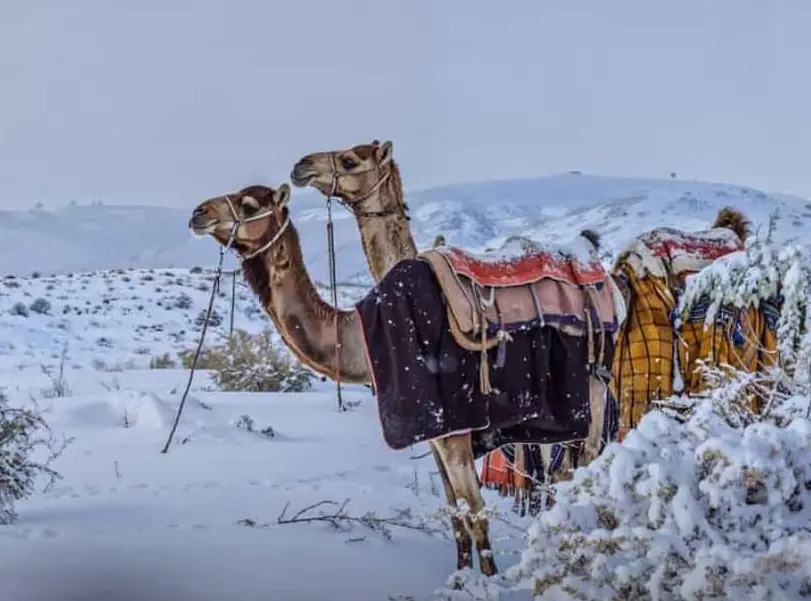Snowfall made headlines last week when it covered Al-Jawf region in Saudi Arabia, turning desert landscapes into winter-wonderland scenes and captivating residents and visitors alike. This unprecedented event caused excitement and discussions regarding climate patterns.
This extraordinary weather event can be traced to a low-pressure system which brought moisture-rich air, combined with the extreme desert heat. As a result, thunderstorms, hail, and even snow were formed.
Weather
People tend to picture Saudi Arabia as being composed solely of sun-baked deserts and an extreme climate, yet this kingdom boasts various seasonal changes that give visitors a glimpse into its stunning natural beauty.
Saudi Arabia’s Al-Jawf region witnessed its inaugural ever recorded snowfall this winter, transforming an otherwise barren landscape into a winter wonderland. Social media went crazy over this phenomenon as people posted striking photos and videos featuring snow-covered dunes and sand dunes covered with thick layer of fluffy white snow.
Though snowfall in the Middle East is rare, there are certain regions that do experience occasional snowfall – including Tabouk province in Saudi Arabia or Rafha mountainous area. Climate anthropologists assert that this unusual event could be linked to global climate change as more frequent shifts in atmospheric conditions cause shifting atmospheric conditions around the world – leading to snowfall becoming more common across desert areas over time, providing eco-tourism possibilities in Saudi Arabia in future years.
Agriculture
Saudi Arabia, with 95% desert territory and its food imports being of central importance, has every reason to maximize its agricultural potential. They aim to expand fruit and vegetable production and have already made considerable strides forward with this initiative.
Today’s Video of the Day from European Space Agency’s Copernicus Sentinel satellite highlights fields in Saudi desert irrigating with fossilized water reserves that formed thousands of years ago when there was more rainfall in this region.
While snowfall in Saudi deserts may seem farfetched, such a weather event could draw eco-tourists. Their experience may prompt them to consider how travel impacts vulnerable ecosystems worldwide.
Eco-tourism
Ecotourism is a form of travel that aims to benefit local communities while mitigating environmental impact, making the trip more meaningful and supporting the preservation of natural resources. Ecotourism can bring many tourists together at one location at once, leading to overexploitation and pollution as well as erosion damage in its wake. But ecotourism does come with some drawbacks. Too many visitors could occupy too many resources at one destination at one time and harm its environment via pollution and erosion.
Snowfall in Saudi Arabia’s Al-Jawf region was an extraordinary spectacle, providing residents and visitors alike a rare chance to experience winter in an otherwise hot desert climate. Social media buzzed with images and videos depicting snow-covered dunes; caused by low pressure system traveling from Arabian Sea to Oman drawing moisture-laden airflow that then caused unusually severe weather conditions.
Climate change
Al-Jawf region in northern Saudi Arabia recently witnessed its inaugural snowfall – an impressive meteorological feat which captured global attention with stunning photos and videos.
According to the National Centre of Meteorology, this unusual weather was caused by a low-pressure system over the Arabian Sea that brought moist air. This combination led to thunderstorms, rain, hail and finally snowfall.
Social media users were taken aback at the sight of snow covering a desert, prompting lively discussions on climate change. Although this event provided a pleasant surprise, locals should remain wary as further unpredictable weather may arise in future events.
Colder temperatures should bring rejuvenation to the area, encouraging flowers and plants to blossom, which would boost local agriculture and ecotourism activities as well as create opportunities for winter tourism in this remarkable environment. It may also serve as a winter tourist draw.


